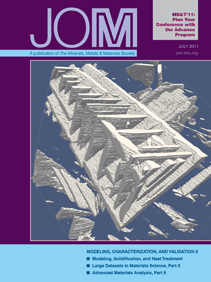VISIT THE
JOM COVER GALLERY
|
|
Duty to Disclose Prior Art to the
United States Patent and Trademark Office
Arnold B. Silverman Failure of a person who is involved
in the preparation or prosecution of
a United States patent application to
disclose material prior art can result
in the patent not issuing, or if issued,
being held unenforceable or invalid. As
in many instances, the issue of whether
prior art is material to patentability
can be quite subjective; it is critical
that inventors, assignees, and attorneys
be acquainted with the obligations to
disclose such prior art.
First of all, the obligation is one
to act in compliance with the duty of
candor and good faith in dealing with
the United States Patent and Trademark
Office (USPTO). The duty to disclose
applies to individuals associated with
the filing or prosecution of a patent
application. This will generally include
the inventor, each attorney or agent, as
well as the assignee of the application
or one to whom a duty of assignment is
owed by one or more inventors.
Secondly, the duty applies only with
respect to prior art which is material
to patentability of one or more claims
pending in the application. It does
not apply to subject matter disclosed
but not embraced by the claims or to
cancelled claims.
There is no duty on the part of an applicant to make a search or other
study to uncover prior art. The standard
relates more to sharing of prior art with
which the individual is acquainted.
The type of prior art generally brought
to the attention of the USPTO includes
documents which have an early enough
effective date to be citable against the
application. Such documents may be
prior patents, certain patent applications,
and publications. It is important
to bear in mind with respect to citations
of prior patents that it is the disclosure
of the patent that is to be evaluated, as
contrasted with the scope of the claims
the prior patentee obtained.
It is important to remain alert to
possible sources of prior art. For
example, if prior related patents have
been issued to the same inventor or
assignee, consideration should be given
to whether any of them are material
to the issue of patentability of the
application being prosecuted. Also,
frequently search reports and actions
from a foreign patent office identify
prior art which was not previously
considered in connection with the
application in question by either the
applicant or the USPTO.
It is not essential that the prior art
fully disclose the invention sought to
be protected by a claim. Prior art can be
combined with other prior art to create
an obviousness type rejection and must
also be submitted to the USPTO.
Generally, to prove inequitable
conduct due to failure to disclose, one
must establish that the applicant failed
to disclose material prior art with intent
to mislead. Where intent to mislead is
clear, fraud may be found to exist.
As the standard involves good faith,
the duty may be violated through fraud
being practiced or attempted or through
bad faith, as well as through other
intentional conduct.
The safest course of action, when
in doubt, is to err in the direction of
making the disclosure. If an item of
prior art would merely be cumulative as
to something already before the USPTO or being cited in an “Information
Disclosure Statement” submitted to
the USPTO, it need not be cited as
the disclosure would add nothing to
the USPTO evaluation in action on the
patent application claims. The USPTO rules provide specific mechanics for
making a submission. A list of the prior art submitted is to be provided along
with a legible copy of each cited item of
prior art (except U.S. patents). In addition,
if the document is not in English, a
translation should be submitted.
In addition to filing an Information
Disclosure Statement, either with the
patent application or shortly after filing,
the duty to disclose is an ongoing
obligation. For example, if six months
after the filing of the patent application a
person first becomes aware of additional
material prior art, a second Information
Disclosure Statement should be
submitted to the USPTO in a diligent
manner. In summary, the obligation
to avoid unethical conduct before the
USPTO is a very important duty which
requires good faith and timely compliance.
When an inventor or assignee
becomes aware of prior art which
may be material to a determination
of patentability, the patent attorney
or agent handling the case should
be contacted promptly in order that
the technical and legal issues can be
discussed and a good faith determination
regarding the duty of disclosure can
be made. The failure to make a proper
disclosure can result in the application
not issuing as a patent or if issued
becoming unenforceable or invalid.
Further, knowing efforts to enforce such
a patent can lead to a determination that
patent misuse has occurred or that the
antitrust laws have been violated. Arnold B. Silverman is chair of the Intellectual
Property department and a member of Eckert
Seamans Cherin & Mellott, LLC in Pittsburgh,
Pennsylvania.
For more information, contact A.B.
Silverman at Eckert Seamans Cherin &
Mellott, LLC, 600 Grant Street, 44th
Floor, Pittsburgh, Pennsylvania 15219;
(412) 566-2077; (412) 566-6099; e-mail abs@escm.com.
|

